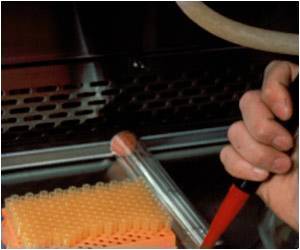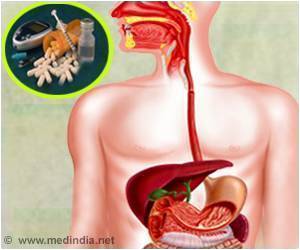Our body contains two types of fat cells, easily distinguished by color: brown and white.

Now, research led by investigators at Beth Israel Deaconess Medical Center (BIDMC) adds another piece to the puzzle, demonstrating that the transcription factor IRF4 (interferon regulatory factor 4) plays a key role in brown fat's thermogenic process, regulating energy expenditure and cold tolerance. The findings appear in the July 3 issue of the journal Cell.
"The discovery several years ago that brown fat plays an active role in metabolism suggested that if we could manipulate the number or activity of these fat cells, we could force our bodies to burn extra calories," explains the study's senior author Evan Rosen, MD, PhD, an investigator in the Division of Endocrinology, Diabetes and Metabolism at BIDMC and Associate Professor of Medicine at Harvard Medical School. "Now that we have identified a major factor driving this process, we can look for new approaches to exploit this for therapeutic benefit."
Turned on by cold temperatures and by certain hormones and drugs, including epinephrine, brown fat generates heat through the actions of a group of genes collectively termed the thermogenic gene expression program, the best known of which encodes uncoupling protein 1 (UCP1). UCP1 dissipates, or wastes, energy in the mitochondria of brown fat cells, causing heat generation as a byproduct.
"There has been intense interest in how the UCP1 gene is regulated, with most attention focused on a molecule called PGC1-alpha," explains Rosen. "PGC1-alpha was discovered 15 years ago in the lab of coauthor Bruce Spiegelman, and is a transcriptional co-factor, which means that it indirectly drives the transcription of genes like UCP1 because it lacks the ability to bind to DNA itself. This suggested that there must be a bona fide transcription factor, or DNA binding protein, that was mediating the effects of PGC-1alpha, but despite years of work and several promising candidates, no clear partner for PGC-1alpha had been discovered to increase thermogenesis. It turns out that IRF4 is that partner."
Interferon regulatory factors (IRFs) play important roles in the regulation of the immune system. Rosen's group had previously identified IRF4 as a key element in adipocyte development and lipid handling, having discovered that IRF4 expression is induced by fasting in fat and that animals that lack IRF4 in adipose tissue are obese, insulin resistant and cold intolerant.
Advertisement
Experiments in mouse models confirmed their hypothesis, demonstrating that IRF4 is induced by cold and cAMP in adipocytes and is sufficient to promote increased thermogenic gene expression, energy expenditure and cold tolerance. Conversely, loss of IRF4 in brown fat resulted in reduced thermogenic gene expression and energy expenditure, obesity and cold intolerance. Finally, the researchers showed that IRF4 physically interacts with PGC-1 alpha to promote UCP1 expression and thermogenesis.
In addition to Rosen and Kong, coauthors include BIDMC investigators Tiemin Liu (now at the University of Texas Southwestern Medical Center), Songtao Yu (now at Northwestern University Feinberg School of Medicine), Xun Wang and Sona Kang; Alexander Banks, Lawrence Kazak, Rajesh R. Rao, Paul Cohen, James C. Lo, Sandra Kleiner and Bruce M. Spiegelman of Dana-Farber Cancer Institute; and Yu-Hua Tseng, Aaron M. Cypess and Ruidan Xue of Joslin Diabetes Center.
This study was funded, in part by National Institutes of Health grants R01 DK31405 and R01 DK085171 and an American Heart Association postdoctoral fellowship to Xingxing Kong.
Beth Israel Deaconess Medical Center is a patient care, teaching and research affiliate of Harvard Medical School, and currently ranks third in National Institutes of Health funding among independent hospitals nationwide.
The BIDMC health care team includes Beth Israel Deaconess Hospital-Milton, Beth Israel Deaconess Hospital-Needham, Beth Israel Deaconess Hospital-Plymouth, Anna Jaques Hospital, Cambridge Health Alliance, Lawrence General Hospital, Signature Health Care, Commonwealth Hematology-Oncology, Beth Israel Deaconess HealthCare, Community Care Alliance, and Atrius Health. BIDMC is also clinically affiliated with the Joslin Diabetes Center and Hebrew Senior Life and is a research partner of Dana-Farber/Harvard Cancer Center. BIDMC is the official hospital of the Boston Red Sox.
Source-Newswise















